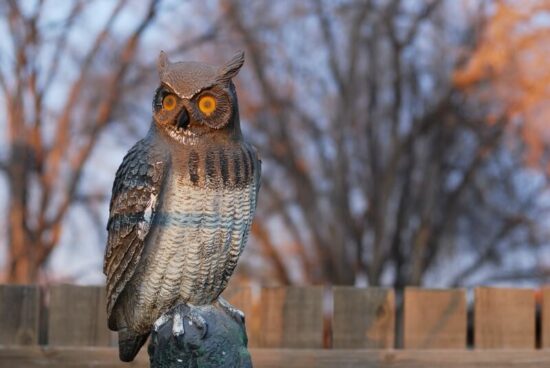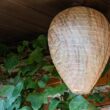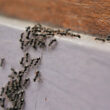Using fake owls to scare away animals is a tactic that appeals to many homeowners.
But is it actually effective?
This guide will cover what pests fake owls will keep away, and how you can use these deterrents as well as possible.
Do Fake Owls Work?
With the trend towards more all-natural alternatives for pest control, many people are using fake owls to scare away unwanted birds and animals from their property. You’ll often see these fake owls on the tops of buildings, on garages and sheds, in trees or near gardens.
The theory is that these owls will be seen as a threat, so pigeons, mice, squirrels and other nuisance animals will stay clear of your yard.
But do fake owls work?
The answer is yes and no. While fake owls scare away some critters, many catch on pretty quickly. Some animals are more gullible than others, but almost all of them won’t be fooled for long.
With that being said, let’s take a look at what animals fake owls scare away. This list will help you decide if it’s worth experimenting with this particular form of pest control for your property.
Squirrels
Squirrels are a ubiquitous part of any backyard setting, and their wild antics are lots of fun to watch. However, squirrels are often very destructive. Given a chance, they will chew their way into your attic, they will eat all of the birdseed in your feeders, and they will dig up plants in your garden. Squirrels also carry diseases and are often infested with fleas.
Many homeowners, who want to humanely discourage squirrels from sticking around, will place fake owls on their property. The idea is that squirrels will look at the owl, feel threatened and beat a hasty retreat.
So do fake owls keep squirrels away?
Squirrels are pretty smart, and they won’t fall for fake owls for long. Moving the owl to different locations will help, but this needs to be done on a regular basis. If you do choose this method, don’t put the fake owl too close to your birdfeeder. Songbirds may be too scared to come to the feeder.
Mice
No one wants to see mice in their yard. Not only will they chew up your property, but they will build nests, eat up your garden, and they spread diseases. In addition, two mice can quickly become many mice, and then they can be nearly impossible to get rid of.
If you’re not into setting traps or using bait, then you might want to try putting out a fake owl. This will work sometimes, and sometimes it won’t. Using a fake owl is pretty good for mice that are in your yard, but for mice that are already in your house, a fake owl is obviously not going to do anything.
For a mouse issue inside your house, we suggest other forms of pest control.
Rabbits
While seeing a rabbit in your yard may be exciting at first, don’t be fooled into thinking that it’s just an innocent visitor. Yes, rabbits are cute and furry, but they are also master garden destroyers.
A couple of rabbits can easily take down a flower bed or a vegetable patch before you even know what’s happening. Plus, they are prolific breeders, and a sweet pair of rabbits can easily become a yard full of rabbits in less than a year.
To keep rabbits from invading your outdoor space, you may want to try using a fake owl. While fake owls do keep rabbits away (to some extent), there are a couple of things to remember.
First of all, rabbits will not be fooled by a cheap plastic owl. Make sure that the owl you choose is a realistic one. Secondly, adult rabbits will not be intimidated by small owl statues. To keep adult rabbits away, you are going to want to use something big such as a fake great horned owl. Lastly, you will need to put the owl on the ground where the rabbits will be able to see it, and you’ll need to move the statue every couple of days.
However, even with these precautions, rabbits probably won’t be put off for too long. If rabbits are eating up your garden, then we recommend implementing some kind of fencing material to keep them out.
Chipmunks
Like squirrels and rabbits, chipmunks are simply adorable. It can be very entertaining to watch them scurry across the yard with their cheeks chock full of seeds and nuts, but there can be an unpleasant side to having chipmunks in your yard. While they may not be as destructive or invasive as mice or squirrels, their burrowing can cause damage to your lawn or garden. They will also sometimes chew into the wood around your house.
To discourage chipmunks from hanging out in your yard, you can try using a fake owl to scare them away. To be the most effective, place the owl or owls on the ground near the places where you notice the most chipmunk activity. This method might be a bit hit or miss, and you will need to move the owl to a different location every couple of days or so.
Pigeons
If you have bird feeders in your yard, then chances are that you will eventually attract pigeons. There are quite a few reasons why you should discourage pigeons from frequenting your yard and feeder. Pigeons are gluttons and will chase away smaller birds in order to have all the food. Once one or two pigeons discover your feeder, they’ll tell their friends, and you’ll have more than you ever imagined.
Lots of pigeons means lots of pigeon droppings, and you could soon find yourself with droppings all over your yard. These droppings have the potential to carry some nasty diseases, so you want to make sure that pigeons stay away from porches, patios and decks.
The thing with pigeons is that they are not quite as dumb as they appear to be. Don’t count on fake owls keeping them away. They might be tricked for a few days, but they will soon be sitting on its head and ignoring it completely.
Rats
Rats, like mice, can be very destructive and dangerous. Rats have fleas and cause a number of serious diseases, including the plague, so getting them out of your yard should be a top priority.
Using a fake owl to scare rats might work for a while, but it is definitely not a permanent solution.
Crows
Crows are notorious eaters of crops, garden produce and orchard fruit. Back in the day, people used things like scarecrows to keep crows at bay. These days, you’re more likely to see fake owls being used.
To be honest, this method doesn’t usually work for very long, and it’s more common to see a bunch of crows mobbing the owl than flying away from it.
Hawks
Hawks aren’t considered to be nuisance animals, but they may be tempted to prey upon poultry or small pets. Using a fake owl as a deterrent is going to be more about territory than it is about fear. The idea is if the hawk sees the fake owl, then it might decide that it doesn’t want to share the area with the owl.
Bats
While bats are important pollinators and consumers of mosquitoes, they are not so helpful if they get into your home or attic.
To discourage these animals from finding their way into your home, you may want to try using a fake owl to keep bats away. Because owls are predators of bats, using an owl may help to keep bats from roosting nearby or from invading your attic.
Seagulls
Unless you live near the coast or a body of water, chances are that you’re not going to have a serious seagull issue. However, if seagulls have found your trash can or are coming around looking for a handout, then using a fake owl may work as a temporary deterrent. Most likely though, the seagulls won’t give the owl a second glance.
Your best bet for getting rid of seagulls is to not encourage them with food and to keep your trash securely covered at all times.
How To Use Fake Owls Effectively
As you can see from what we discussed above, using fake owls to scare away nuisance animals is not always the best method. While it may work for a short period of time, most animals or birds will not fall for this trick for long. There are some things, however, that you can try that may help to prolong the effect of a fake owl. Let’s take a look at a few.
First of all, you’ll want to make sure that the fake owl looks real. You’re not going to scare anything away with a statue that doesn’t look authentic. You also need to use a statue that mimics the owl that most animals and birds are afraid of. This is usually something large like a great horned owl.
The next thing that you need to consider is movement. Sticking a fake owl in your yard and then forgetting about it won’t work. You are going to have to move the owl to a new location every few days. This is to keep yard critters from getting the hint that it’s not a real owl.
Some people even go to the trouble of hanging the owl from a rope or wire, so it has the appearance of flying. Again, this will work for a while, but it won’t be a permanent solution.
Lastly, you can try different kinds of fake owls. They have some that make noises, some that swivel their heads and some that have glowing eyes. Just remember that even if the fake owl looks and acts kind of like a real owl, it probably won’t keep nuisance animals out of your yard for long.
Conclusion
Now that you know what fake owls scare away, it’s up to you to decide if you want to try out this form of pest control.
While it’s not as effective as other more aggressive options, it might be worth a try!


